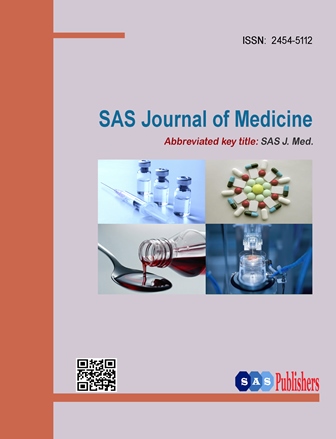+91-9365665504
+91-8724002629
submit@saspublishers.com / saspjournals@gmail.com

An International Publisher for Academic and Scientific Journals
Author Login
SAS Journal of Medicine
Journal Home
Description
Editorial Board
Archives
Indexing
Statistics
Title : SAS Journal of Medicine
Abbr : SAS J Med
ISSN (Online) : 2454-5112
ISSN (Print) : Open Access
Discipline : Medicine
Frequency : Monthly
Country : India
Language : English
Abbr : SAS J Med
ISSN (Online) : 2454-5112
ISSN (Print) : Open Access
Discipline : Medicine
Frequency : Monthly
Country : India
Language : English
10.36347/sasjm
DOI
DOI
5.0
IMPACT FACTOR
IMPACT FACTOR
Current Issue : Volume-12 - Issue-01 ; 2026
Recently Published Articles
Jan. 10, 2026 | Original Research Article
Effect of Vitamin D3 (Cholecalciferol) on Cardiac Redox Homoeostasis in Male Wistar Rats Fed High Sucrose Diet
Adenike Endurance Omotehinse, Adewumi Oluwafemi Oyabambi, Josephine Utibe Okonko, Blessing Francis, Victory Fegor Ojeje
SAS J Med | 28-41
DOI : https://doi.org/10.36347/sasjm.2026.v12i01.005
Jan. 10, 2026 | Original Research Article
Invasive Pneumococcal Disease in Children Under Five Years in a Tertiary Care Center, Saudi Arabia
Fatimah AlNakhli, Rana Almaghrabi, Musaed Alharbi, Lubna Abdulrahman Elshaib
SAS J Med | 21-27
DOI : https://doi.org/10.36347/sasjm.2026.v12i01.004
Jan. 10, 2026 | Original Research Article
Delayed Puberty in Adolescents: Advances in Diagnosis, Classification, and Treatment Modalities
Samer Al Sharani, Nagham Alkridi
SAS J Med | 12-20
DOI : https://doi.org/10.36347/sasjm.2026.v12i01.003





